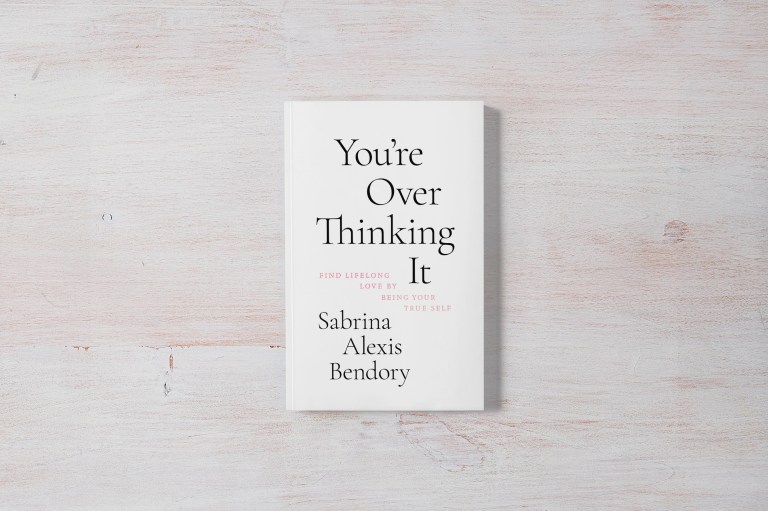There is a lot of talk about attachment styles these days. I constantly see people assigning themselves an attachment style and diagnosing their partners.
Attachment styles refer to the way people perceive and respond to intimacy in romantic relationships. Attachment style is important to understand because it can give you insight into yourself and how you relate to others and it has an impact on your relationships.
First, it’s important to know that you are not locked in by your attachment style. It’s a spectrum and there is room for movement and growth.
Attachment style isn’t always related to your childhood, either. You may have been securely attached as a child but then developed an insecure attachment style after a toxic romantic relationship.
It’s possible to have a healthy relationship even if you have an insecure attachment style.
Now let’s look at each attachment style–the challenges each faces, how to overcome them, and how to cope if you’re dating someone with that attachment style.
1. Secure.
People with a secure attachment style feel comfortable with intimacy and are usually warm and loving. They trust themselves to deal with whatever happens in life.
They can give and receive love in healthy amounts and don’t worry about people abandoning or rejecting them. They can see someone else’s perspective and are considerate of their partner’s needs.
Childhood
People with secure attachment styles typically had loving parents who were attuned to their needs when they were young. They felt supported, cared for, seen, and validated. They can trust people and rely on them and they don’t usually struggle in relationships. They can choose who to be with and aren’t governed by a subconscious desire to heal old childhood wounds. In the absence of trauma weighing them down, they are free to choose who to be with, and they typically make good choices.
In relationships
They are comfortable and secure. They are not worried about their partner suddenly leaving them and are comfortable giving a healthy amount of space.
They respect boundaries and can bring up issues in a healthy manner, without being triggered, reactive, or confrontational.
Basically, they’re the gold standard and are ideal romantic partners.
2. Anxious Attachment
People who are anxiously attached tend to idealize love and obsess and overthink everything. They frequently worry about their partner’s ability to love them back and require a lot of reassurance.
Their core wound is fear of abandonment and fear of not getting their needs met.
Childhood
Their parents most likely were inconsistently attuned to their needs–sometimes they were nurtured and cared for, other times they were dismissed, belittled, or made to feel like they were too much. They never quite knew what to expect which kept them constantly on edge.
In relationships
They struggle with being hyper-vigilant, always waiting for the other shoe to drop. They mind-read, assume, project, and make predictions all in an attempt to foresee the inevitable end of the relationship so they aren’t taken off guard.
They need constant reassurance and validation which can be draining for their partners. Also, it’s never enough, they always need more, like a cup without a bottom.
They tend to be most attracted to people who don’t show clear interest in them because the implicit message they received growing up was they had to work to earn someone’s love. This is why anxious people will often be drawn to avoidant ones.
This also causes them to have weak boundaries and people-pleasing tendencies. They will give everything of themselves so long as it gets them the love and validation they crave.
How to overcome it
You need to practice the power of the pause. This means you pause before reflexively reacting and panicking over whatever the perceived threat is. First, get yourself regulated. Take some deep breaths, go for a walk, do jumping jacks, or do anything that will get you out of the panic mode.
Next, re-frame and try to look at things from a different angle–what else might be going on here?
It’s important to recognize your triggers. Get to know them. Where did they come from? What is the source? What usually happens before I get triggered? What is the root of this trigger? When was the first time I felt this way?
Maybe your partner is taking a while to text back and you start to panic and think this means he’s losing interest or ghosting you. Pause. What’s another way of looking at this?
Just because you think it doesn’t mean that’s the reality. And your worried and anxious thoughts will put you in a chokehold if you don’t fight back against them.
3. Avoidant
People with avoidant attachment styles have a core wound of not being good enough and think if you knew the real them, you wouldn’t like it and they would be rejected and abandoned.
Their fear of abandonment can cause them to self-sabotage. They crave love and connection but also fear it intensely.
They think opening up completely will lead to being unloved and rejected. Growing up they consistently received the message that feelings can be dangerous and so they shut their emotions down easily and can appear cold and detached.
Rather than expressing their feelings, they may completely shut down, withdraw, or ghost you. Their faulty core belief is that they will be rejected if they express their needs or feelings so they would rather withdraw before that happens.
Childhood
People with an avoidant attachment style usually had emotionally unavailable or emotionally abusive parents. Their parents most likely punished them for having inconvenient feelings and shamed them for expressing any negative emotions.
They felt emotionally neglected growing up and developed a belief that emotions are dangerous so they try to avoid them. The more they do this, the more emotionally detached they become from themselves and others.
In relationships
If you have an avoidant attachment style, you may go all in at first when it’s all new and exciting…but as things deepen, your fears will get the best of you.
When things get real and you have to be more authentic and vulnerable, you may shut down more and more.
You have a hard time really letting someone in because you think you will be abandoned if you do. Even though you want a connection, this fear is so great that you continue to hold yourself back.
You may have a hard time with criticism or if your partner points out something they need from you because this activates your core wound of being a failure.
How to overcome it
Recognize that the thing you fear is the thing you crave the most.
Try to reconnect with your feelings and express them instead of pushing them away. You need to integrate so you can be your authentic self. Try journaling as a way to get in touch with your true feelings, notice what comes up, and don’t judge yourself for having the emotions, let them come and go like waves.
If you have someone in your life who does make you feel safe, practice opening up to them. Notice that you will not be rejected or shamed for sharing your true self. Conversely, this is what creates deep bonds.
4. Disorganized attachment (or fearful-avoidant)
If you have this attachment style don’t be discouraged by what you’ve read. Yes, this is the most challenging attachment style but you can manage it and you can have a healthy relationship.
People with this attachment style are scared to get too close but are also scared of being abandoned, so they alternate between being anxious and avoidant depending on the circumstances.
People with a fearful-avoidant attachment style have a hard time trusting others and are very guarded to protect themselves from any sort of rejection.
This attachment style is just very messy, hence the term “disorganized.” They are all over the place and don’t really know what they feel or what they want. They may chase after an emotionally avoidant person and feel desperate to win that person’s love, plotting and strategizing and feeling terrified of losing them… but then completely lose interest and shut down if that person does eventually commit.
They feel unworthy and carry an enormous amount of shame.
Childhood
People with a fearful avoidant attachment style usually suffered significant childhood trauma, which could be physical or emotional abuse. They most likely felt terrified of their parents but at the same time had to rely on them for their survival. Their parents most likely caused significant distress and they learned to cope by completely dissociating from themselves and shutting down.
In relationships
You struggle in relationships because you don’t trust yourself or your instincts. You also feel very disconnected from yourself and your emotions because growing up you learned to ignore pain and pretend everything was fine.
Your relationships usually feel like chaos, sometimes you want your partner close, and other times you don’t want anyone near you.
You have trouble regulating your emotions and are easily triggered and highly reactive. You can be loving but also withdrawn. And you play hot and cold like no other.
How to heal
You need to do some intense inner work to heal from your trauma and reconcile with your wounded inner child.
You need to learn how to identify and process your emotions instead of immediately shoving them away.
To truly heal, you should consider working with a therapist or coach (this is the work I do with my clients) who will help you re-wire all the faulty and limiting beliefs living in your subconscious and give you the tools and skills to cope with your triggers.








